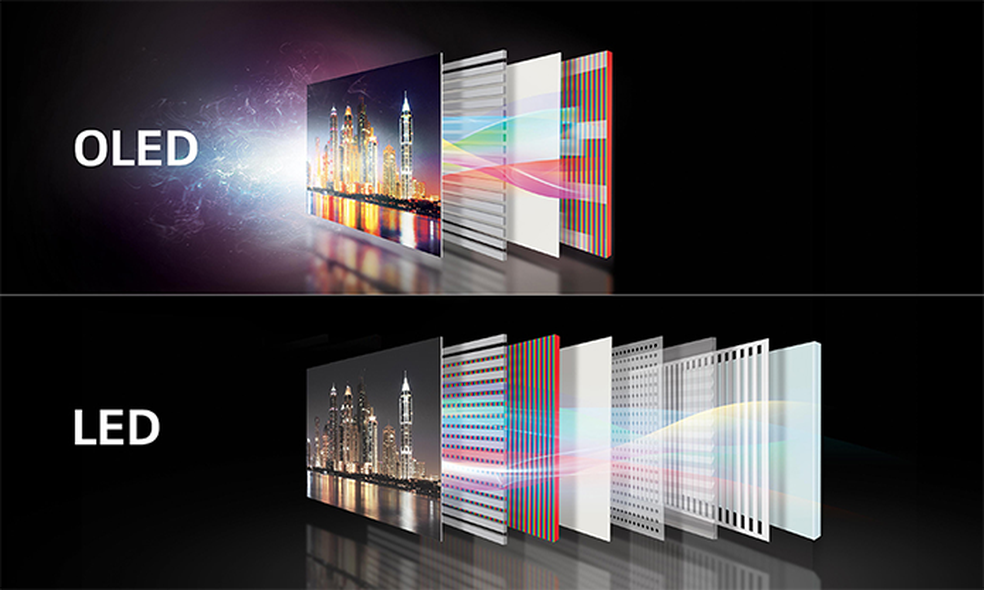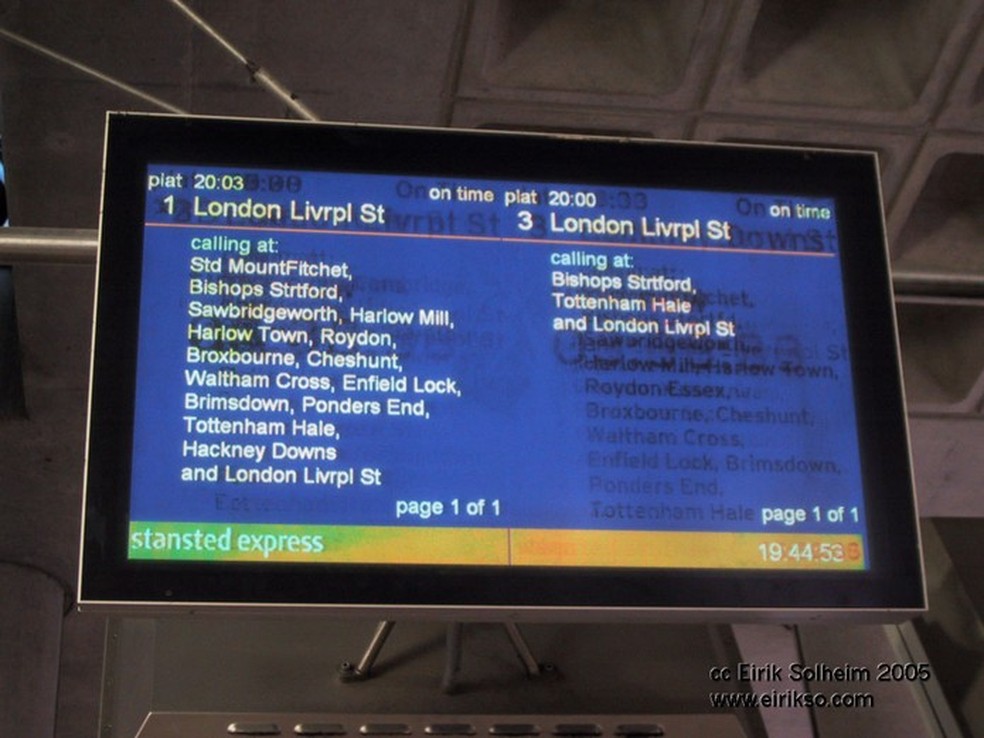Sony unveiled the Bravia XR A95K, the world’s first QD-OLED screen TV during CES 2022. A Samsung technology, QD-OLED represents an evolution that combines the virtues of LED panels with quantum dots for more intense color and brightness with the qualities of OLED, such as infinite contrast and more accurate dark tones.
Below you will learn more about how QD-OLED works, the advantages of the technology, and the differences of this type of display compared to more established technologies such as the LED and OLED screens available today.
What is QD-OLED?

QD-OLED is a technology introduced by Samsung that mixes the so-called QLED with OLED. The manufacturer’s goal is to create a new type of display for televisions and monitors that combine the advantages of both technologies: from OLED comes infinite contrast and dark tones of high precision and quality, while QLED takes advantage of the ability to generate colors and brightness more intense than possible in OLED.
At first, these are Samsung’s promises. In the promotional material, the brand talks about a wider color spectrum, covering 99.8% of the DCI-P3 color standard. It’s a record that backs up the promise, but OLED screens – without the quantum dots – that achieve something in this same range already exist on the market.
QLED + OLED
QLED screens are of the LCD/LED type but use so-called quantum dots to ensure images with high brightness intensity and great color quality. OLED, on the other hand, eliminates the need for a LED panel illuminating the display, since in this type of technology each pixel controls its brightness.

This difference in approach between the two technologies ends up representing advantages and limitations in each one. A QLED display will achieve higher brightness and should not distort color, even at maximum brightness. On the other hand, the QLED display may not have the best contrast ratios – the measure of the difference between light and dark tones on the screen – and will also have darker tones and blacks that look more washed out, distorting to gray.
On the other hand, OLED has so-called infinite contrast, as every pixel on the screen can be turned off to emit high-precision dark tones. Overall, the perception is that the image quality of OLED is superior because of these two characteristics. Still, the technology has limits in televisions and monitors: the maximum brightness level is lower and, with high brightness, colors tend to be distorted.
All this without considering durability issues: OLED panels are subject to more intense wear and tear, such as loss of brightness and color quality, as well as the risks of burn-in, but we will talk about this later.
What is a quantum dot and its differences to OLED?

Quantum dots are small particles ranging in size from 2 to 10 nanometers of semiconductor material that, when illuminated by some specific frequency of light, end up emitting some kind of colored light. Larger points of 10 nm will generate red color, and smaller ones, blue tones.
The different sizes between these two extremes generate different colors, thus filling the spectrum with various shades that, combined on the display, generate vibrant and accurate colors. The downside of this approach is the same as with any LED panel. The light responsible for producing colors ends up affecting the reproduction of dark tones, thus impairing the contrast intensity of this type of display.
In OLED there is no LED illuminating the entire display, so individual pixels can be turned off to create high-quality dark tones for much higher contrast. With no quantum dots, OLED relies on substrates that emit light that passes through filters for red, blue, and green (from the RGB standard, something you might see with a macro lens applied to a smartphone screen) generating the final colors and patterns you see on the screen. OLEDs used in televisions may also have a white filter included so that the screen achieves higher levels of brightness.
However, OLED technology does have some limitations: This process of filtering light and the way it is emitted poses difficulties for these panels to generate high brightness. In many cases, the higher brightness can even distort color and compromise the life of the panel.
Samsung’s QD-OLED technology corrects this deficiency because it eliminates such filters and uses quantum dots to produce color. Since the light generated by OLED does not end up diffused and knocked out by filters, the panel’s brightness tends to be more intense and contributes to colors staying true even with higher intensity, without distorting the contrast between light and darker areas of the screen.
Since they also emit color uniformly, the QD-OLED quantum dots should contribute to much wider viewing angles than are possible on regular OLED panels.
Samsung has outlined some data that helps give an idea of what QD-OLED might represent in image quality. In the brand’s accounts, a QD-OLED screen can hit 200 nits across the entire display surface, or 1,000 nits in a more condensed area of the screen. The CNET website, in reviewing the LG C1, noted that the screen hits 800 nits in a 10% area of the display.
Does QD-OLED fix burn-in and lifetime problems?
OLED has been the benchmark in terms of high-end TVs for a few years now. However, two points may put consumers off: the first is the problem of image retention, the famous burn-in.
Image retention occurs when the screen displays static elements that change a little over time: a HUD in a game or the Windows taskbar, for example. If this image is static and changes a little over time, it can be permanently etched into the pixels, marking the screen forever.

Newer OLED televisions and monitors have mitigation techniques built-in, which mitigate the problem but do not completely prevent it.
According to the CNET website, Samsung indicates that QD-OLED panels are at least as good (or bad, it depends on your point of view) at managing burn-ins as current OLED screens. The manufacturer promises an automatic compensation mechanism to mitigate the risks, but at first, QD-OLED should not represent the end of burn-in.
Another issue surrounding OLED is the lifespan: screens of this type tend to lose quality at a faster rate than other technologies. Questions about wear and tear have not been addressed by Samsung and will have to be observed by independent analysis when products with the new technology reach the market.
At the moment, OLED panels are confined to more expensive televisions because the technology poses significant manufacturing costs and challenges, directly impacting the final costs of products that feature OLED displays. The expectation around QD-OLED is that prices will be high, especially considering the reduced supply. Only Samsung dominates the technology at the moment and this should have an impact on the prices of TVs and monitors with the feature.
This post may contain affiliate links, which means that I may receive a commission if you make a purchase using these links. As an Amazon Associate, I earn from qualifying purchases.

